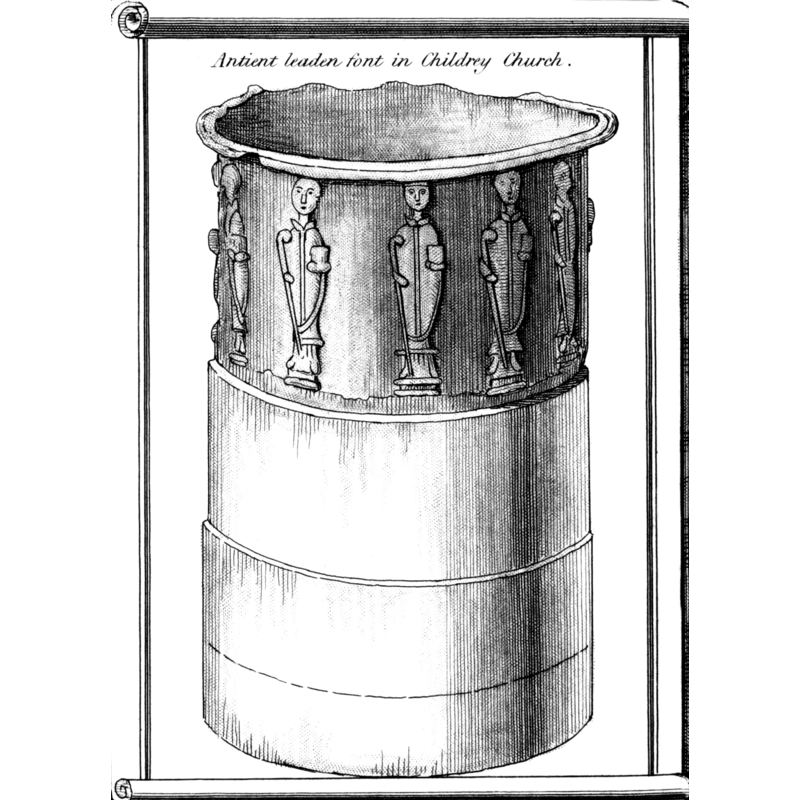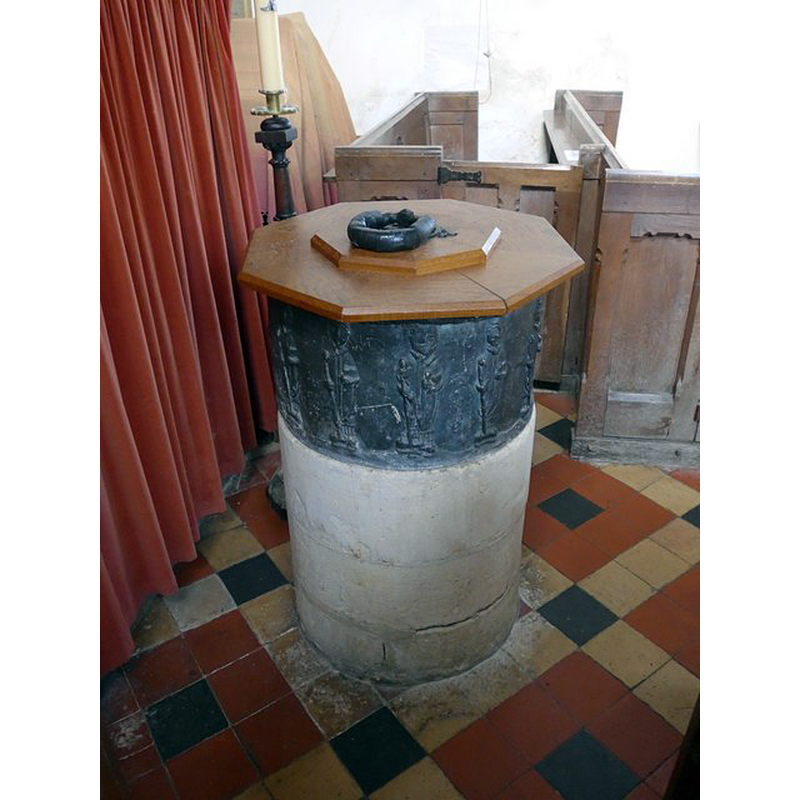Childrey / Celrea / Chelrey / Chilree
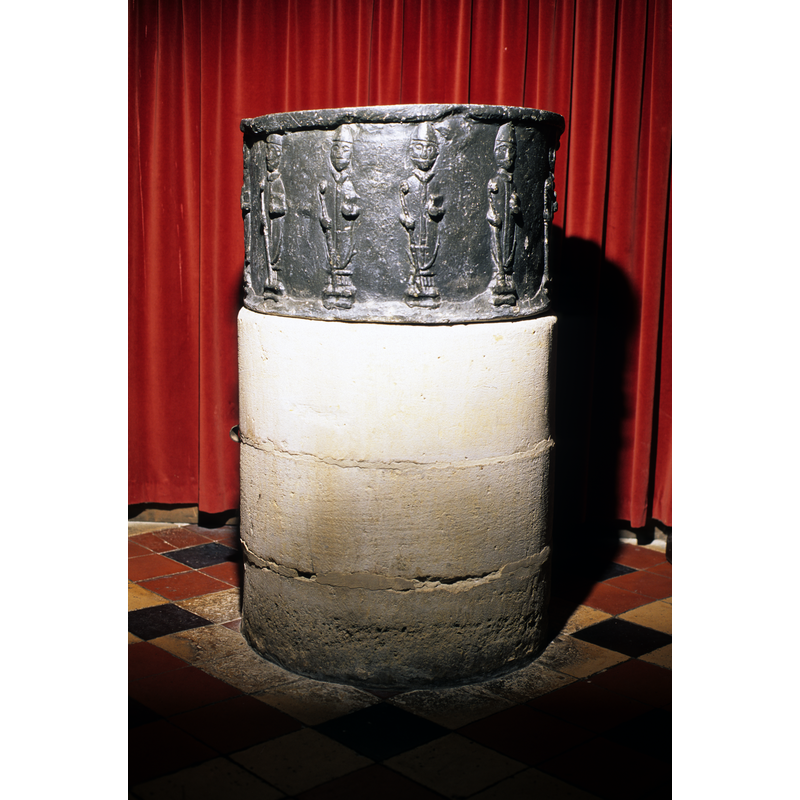
Image copyright © Baptisteria Sacra Index, 2023
Results: 10 records
cleric - bishop - wearing mitre - with staff - 12
view of basin
view of basin
view of basin and cover
view of church exterior - south view - detail
Scene Description: Source caption: "The church has been listed Grade I since 1966 [...] It has a 15th century tower although its origins are some 200 years earlier. There was an even earlier church hereabouts dating to 996 AD which was recorded in the Domesday Book but no trace remains. The nave is Norman but was rebuilt in the mid 15th century around the same time as the tower was built. The transepts were added in ca 1325. The church contains a number of floor- and wall-mounted brasses. There is also an ancient lead font which may date to as early as 1175. It features the embossed figures of twelve bishops dressed in chasubles. The single-handed clock on the tower dates to 1763 and until as recently as 1985 was wound manually every day. Mechanisation has taken over the task. There are memorials within to soldiers who died in the Great War including a brass plaque commemorating the Fallen who were members of the Old Berkshire Hunt. An unusual such memorial is a German-made cross that marked the grave of a British Officer born in Childrey who died in battle in France in 1914 and who was buried by his enemies. Another curiosity is the presence of ‘squints’, openings through the wall of a church in an oblique direction, to enable the worshippers in the transepts or other parts of the church, from which the altar was not visible, to see the elevation of the host. The squint in the north transept is set too high for this to be the case and its true purpose remains unclear."
Copyright Statement: Image copyright © Brian Robert Marshall, 2011
Image Source: digital photograph taken 25 August 2011 by Brian Robert Marshall [www.geograph.org.uk/photo/2570712] [accessed 28 February 2015]
Copyright Instructions: CC-BY-SA-2.0
view of church interior - nave - looking east
view of church interior - nave - looking west
Scene Description: the font at the far [west] end of the nave
Copyright Statement: Image copyright © Brian Robert Marshall, 2011
Image Source: digital photograph taken 25 August 2011 by Brian Robert Marshall [www.geograph.org.uk/photo/2571494] [accessed 28 February 2015]
Copyright Instructions: CC-BY-SA-2.0
view of font
view of font
INFORMATION
FontID: 00268CHI
Object Type: Baptismal Font1
Church/Chapel: Parish Church of St. Mary the Virgin
Church Patron Saints: St. Mary the Virgin
Church Location: Church Row, Childrey, Oxfordshire, OX12 9PQ
Country Name: England
Location: Oxfordshire, South East
Directions to Site: Located about 25 kms SW of Oxford, just E of Wantage on the B4507 (dir. Swindon)
Ecclesiastic Region: Diocese of Oxford
Historical Region: formerly in Berkshire -- Hundred of Wantage [in Domesday]
Font Location in Church: Inside the church, at the W end of the nave
Century and Period: 12th - 13th century, Medieval
Workshop/Group/Artisan: lead font
Credit and Acknowledgements: We are grateful to Timothy Marlow for his photograph of this font
Font Notes:
Click to view
There are three entries for Childrey [variant spelling] in the Domesday survey [http://domesdaymap.co.uk/place/SU3687/childrey/] [accessed 28 February 2015], one of which, in the tenancy of Turstin son of Rolf, mentions a church in it. A lead font here is illustrated in Upcott (1818) [with a reference to Lysons]. Listed in Paley (1844) as a "leaden font". In Batty (1848). Noted in Lewis' Dictionary of 1848: "a curious circular font of lead, divided into compartments, in each of which is the figure of an abbot". Noted in Bloxam (1859) and in Cox (1875). In Andre (1882) as late-Norman. Murray (1882) reports a "curious font" in this church. Described in 'Church notes...' (1887) in the context of some "notes [that] were taken between 1835 and 1840": "Font very curious, of lead, cylindrical, embossed with two figures of bishops, with low mitres and crooks in the right hand, the bowl rests upon a stone cylindrical stem, quite plain." Noted in Lethaby (1893). Described in Cox & Harvey (1907) as a lead baptismal font of the 13th century, in the Norman style, "with twelve bishops in relief round the bowl". Bond (1908) counts twelve bishops around the bowl as well. Jenkins (1999) describes them as "apostles dressed as abbots." The Victoria County History (Berkshire, vol. 4, 1912) notes: "The church of Childrey was attached in 1086 to the manor subsequently known as Frethornes [...] The nave is apparently of late 12th-century date, though the south door is the only remaining detail of that period. [...] The font is a plain circular bowl of lead having twelve embossed figures of bishops, each with crozier, book and mitre; it is probably of the 12th century and is unique." On-site notes: small cylindrical lead font with twelve hieratic figures around its sides: they are all wearing chasubles, holding staff in the right arms and, each, holding an object in their left hand; the hats appear to be mitres. The basin is raised on a plain, modern, cylindrical concrete base. The modern base is cast concrete.
COORDINATES
Church Latitude & Longitude Decimal: 51.587641, -1.481919
Church Latitude & Longitude DMS: 51° 35′ 15.51″ N, 1° 28′ 54.91″ W
UTM: 30U 605169 5716268
MEDIUM AND MEASUREMENTS
Material: metal, lead
Number of Pieces: one
Font Shape: cylindrical (mounted)
Basin Interior Shape: round
Basin Exterior Shape: round
Rim Thickness: 1-2 cm
Diameter (inside rim): 52-53 cm
Diameter (includes rim): 55.5 - 56.5 cm
Basin Depth: 30 cm
Basin Total Height: 32 cm
Notes on Measurements: BSI on-site
LID INFORMATION
Date: modern
Material: wood, oak?
Apparatus: no
Notes: octagonal and flat; massive metal handle; modern
REFERENCES
"Church notes, chiefly in Berks, Wilts, and Oxford, with a few in Somerset and Gloucestershire", 44, Archaeological Journal, 1887, pp. 43-50; 185-193; 291-303; 397-402; p. 186
Victoria County History [online], University of London, 1993-. Accessed: 2011-11-07 00:00:00. URL: https://www.british-history.ac.uk.
André, J. Lewis, "Leaden Fonts in Sussex", 32, Surrey Archaeological Collections, relating to the history and antiquities of the county, 1882
Batty, Robert Eaton, Some particulars connected with the history of baptismal fonts: being a paper read at the quarterly general meeting of the Architectural and Archaeological Society for the County of Buckingham, London: F. & J. Rivington, 1848
Bloxam, Matthew Holbeche, The Principles of Gothic ecclesiastical architecture, with an explanation of technical terms […], London: W. Kent, 1859
Bond, Francis, Fonts and Font Covers, London: Waterstone, 1985 c1908
Clayton, Brian C., "English Church Fonts of Ornamental Lead Work", X, no. 57, Apollo: a Journal of the Arts, 1929, pp. 133-138; p. 133-138
Cox, John Charles, 1875-1877
Cox, John Charles, English Church Furniture, New York: E.P. Dutton & Co., 1907
Ditchfield, Peter Hampson, English villages, London: Methuen & Co., 1901
Jenkins, Simon, England's Thousand Best Churches, London and New York: Allen Lane, the Penguin Press, 1999 [2000 rev. printing]
Lethaby, William Richard, Leadwork, old and ornamental, and for the most part English [...] with illustrations, London; New York: Macmillan & co., 1893
Lewis, Samuel, A Topographical Dictionary of England, Comprising the Several Counties, Cities, Boroughs, Corporate and Market Towns, Parishes, Chapelries, and Townships, and the Islands of Guernsy, Jersey, and Man, with Historical and Statistical Descriptions [...], London: S. Lewis, 1831
Murray, John [the firm], Handbook for travellers in Berks. Bucks and Oxfordshire, including a [...], London: John Murray, 1882
Paley, Frederick Apthorp, Illustrations of Baptismal Fonts, London, UK: John van Voorst, 1844
Tyrrell-Green, E., Baptismal Fonts Classified and Illustrated, London: Society for Promoting Christian Knowledge: The Macmillan Co., 1928
Upcott, William, A bibliographical account of the principal works relating to English topography, London: Printed by Richard and Arthur Taylor, 1818
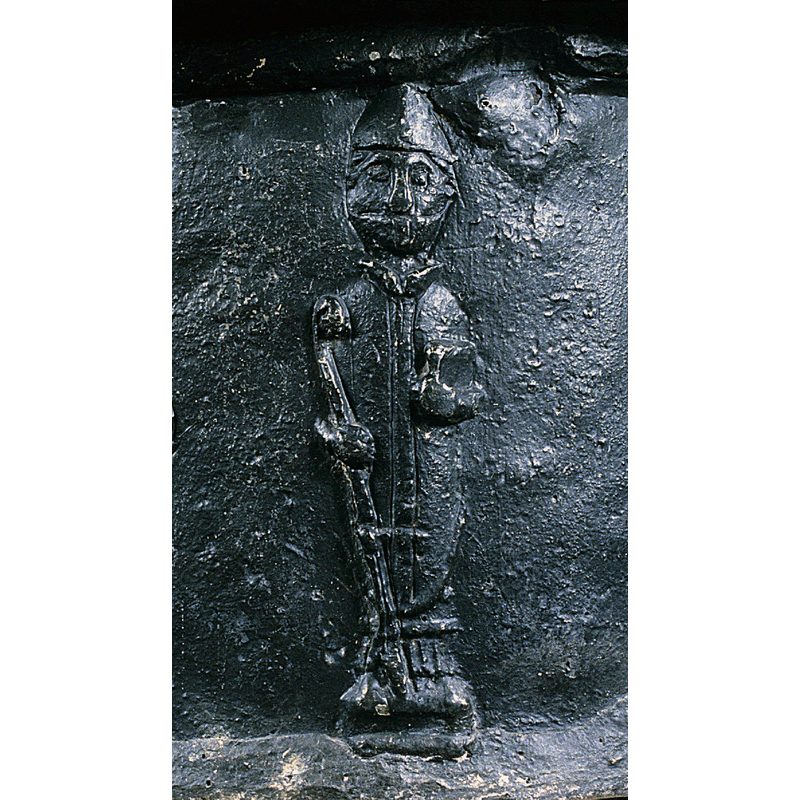
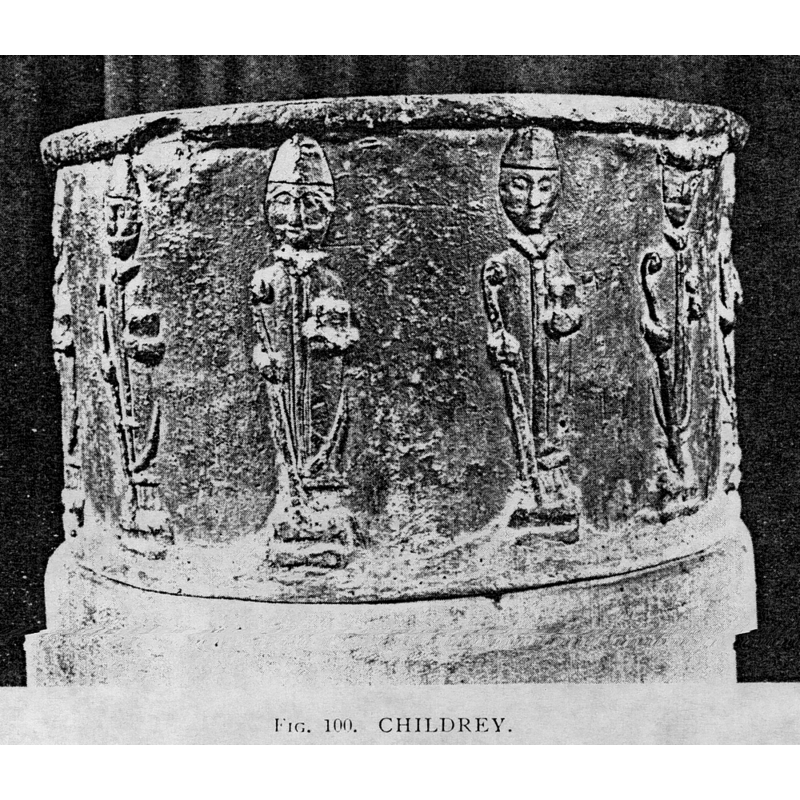

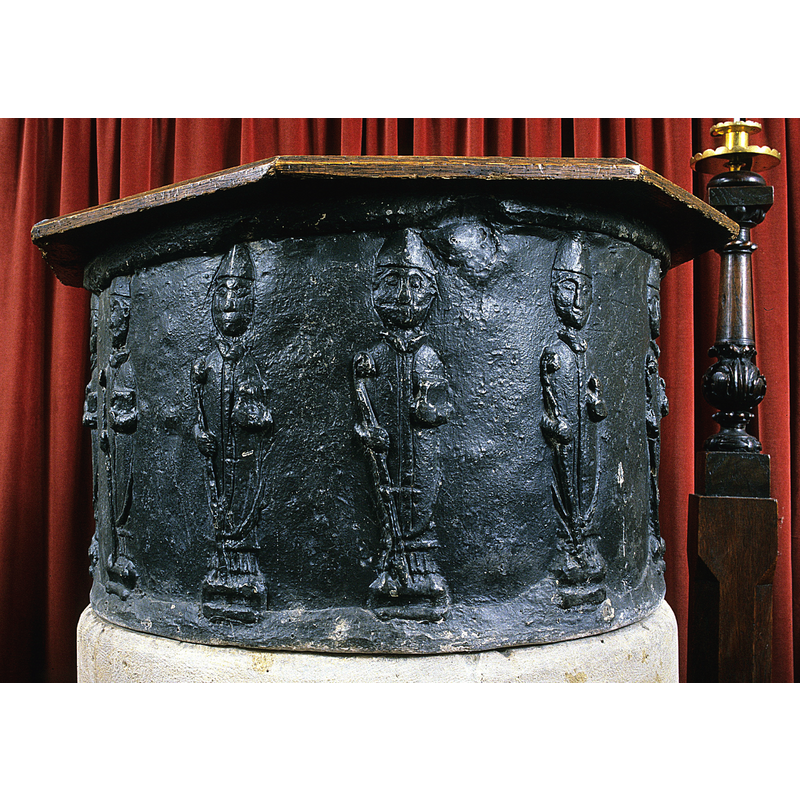
![Source caption: "The church has been listed Grade I since 1966 [...] It has a 15th century tower although its origins are some 200 years earlier. There was an even earlier church hereabouts dating to 996 AD which was recorded in the Domesday Book but no trace remains. The nave is Norman but was rebuilt in the mid 15th century around the same time as the tower was built. The transepts were added in ca 1325. The church contains a number of floor- and wall-mounted brasses. There is also an ancient lead font which may date to as early as 1175. It features the embossed figures of twelve bishops dressed in chasubles. The single-handed clock on the tower dates to 1763 and until as recently as 1985 was wound manually every day. Mechanisation has taken over the task. There are memorials within to soldiers who died in the Great War including a brass plaque commemorating the Fallen who were members of the Old Berkshire Hunt. An unusual such memorial is a German-made cross that marked the grave of a British Officer born in Childrey who died in battle in France in 1914 and who was buried by his enemies. Another curiosity is the presence of ‘squints’, openings through the wall of a church in an oblique direction, to enable the worshippers in the transepts or other parts of the church, from which the altar was not visible, to see the elevation of the host. The squint in the north transept is set too high for this to be the case and its true purpose remains unclear."](/static-50478a99ec6f36a15d6234548c59f63da52304e5/compressed/1150228029_compressed.png)

![the font at the far [west] end of the nave](/static-50478a99ec6f36a15d6234548c59f63da52304e5/compressed/1150228030_compressed.png)
